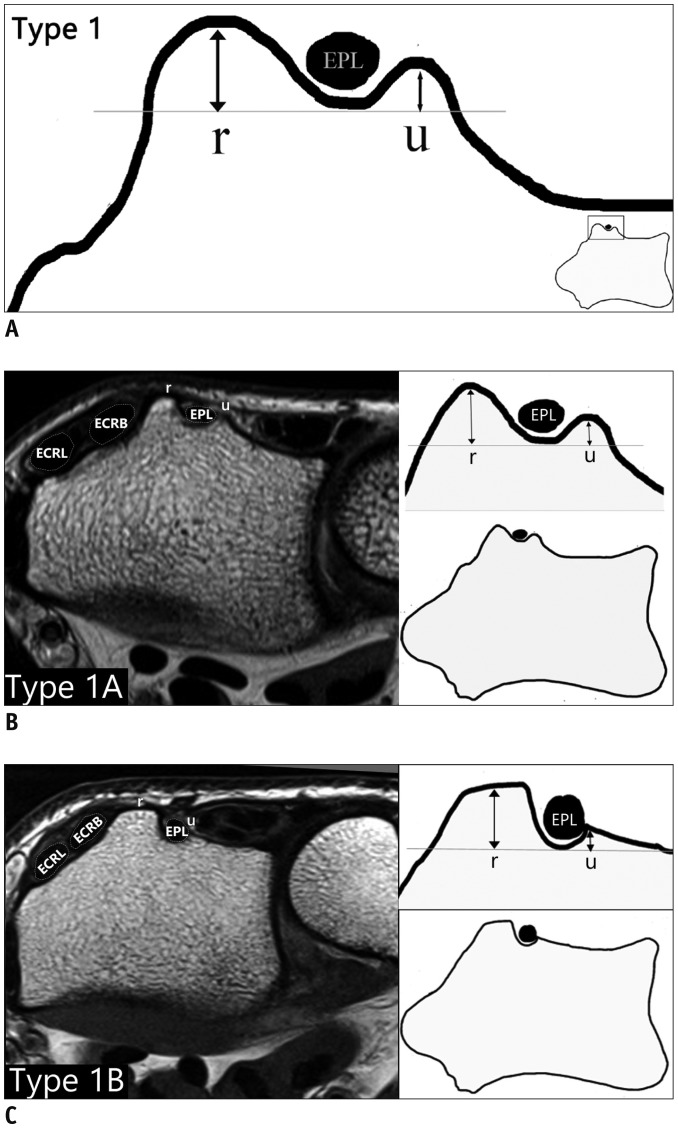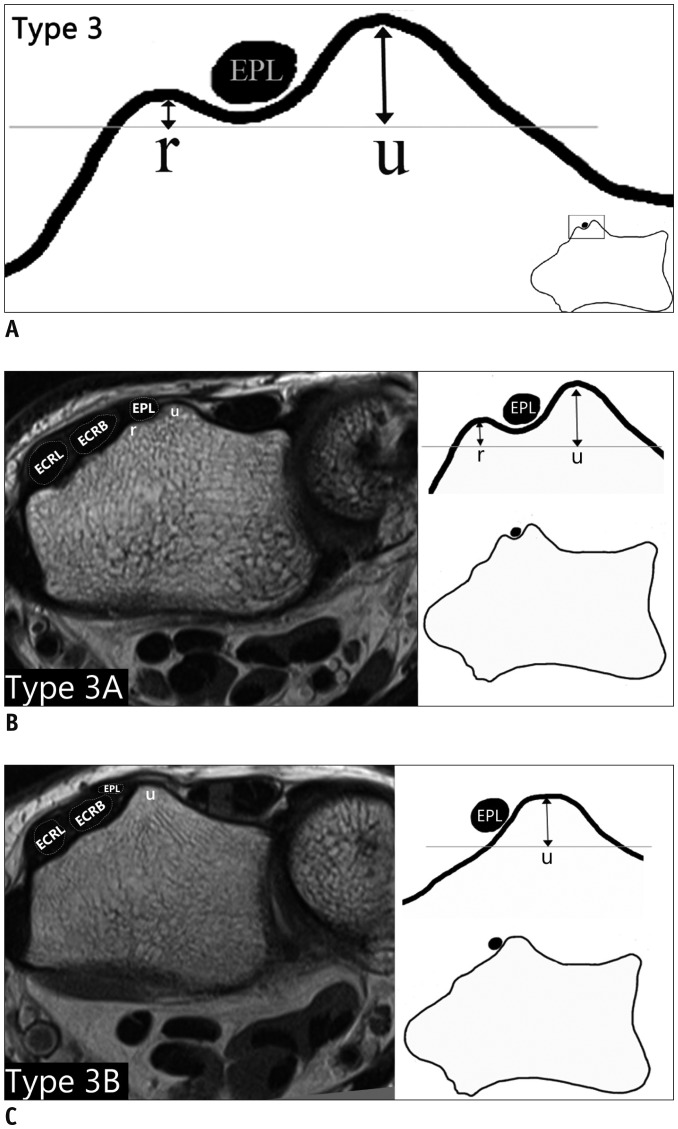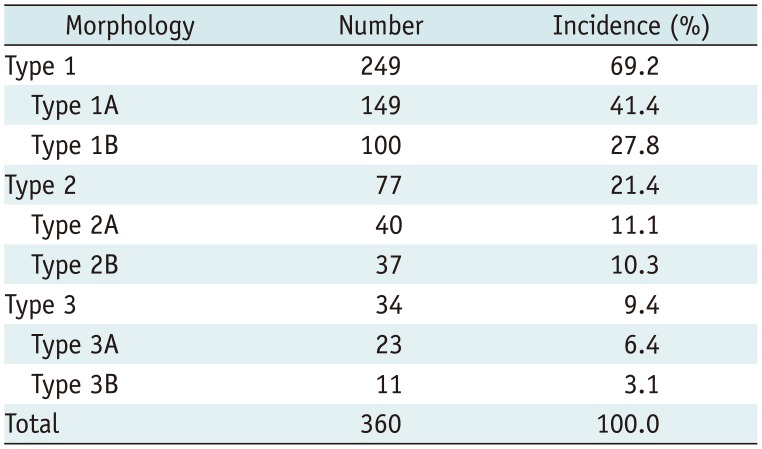1. Saffar P, Fakhoury B. [Secondary repair of the extensor pollicis longus]. Ann Chir Main. 1987; 6:225–229. PMID:
3426331.
2. Hazani R, Engineer NJ, Cooney D, Wilhelmi BJ. Anatomic landmarks for the first dorsal compartment. Eplasty. 2008; 8:e53. PMID:
19092992.
3. Smith J, Rizzo M, Finnoff JT, Sayeed YA, Michaud J, Martinoli C. Sonographic appearance of the posterior interosseous nerve at the wrist. J Ultrasound Med. 2011; 30:1233–1239. PMID:
21876094.

4. Ikiz ZA, Uçerler H. Anatomic characteristics and clinical importance of the superficial branch of the radial nerve. Surg Radiol Anat. 2004; 26:453–458. PMID:
15365770.

5. Smith DK. Dorsal carpal ligaments of the wrist: normal appearance on multiplanar reconstructions of threedimensional Fourier transform MR imaging. AJR Am J Roentgenol. 1993; 161:119–125. PMID:
8517289.

6. Lohman M, Vasenius J, Nieminen O. Ultrasound guidance for puncture and injection in the radiocarpal joint. Acta Radiol. 2007; 48:744–747. PMID:
17729005.

7. Slutsky DJ. Wrist arthroscopy. In : Wolfe SW, Hotchkiss RN, Pederson WC, Kozin SH, editors. Green's operative hand surgery. 6th ed. Philadelphia: Elsevier;2011. p. 709–741.
8. Berger RA. A method of defining palpable landmarks for the ligament-splitting dorsal wrist capsulotomy. J Hand Surg Am. 2007; 32:1291–1295. PMID:
17923317.

9. Barbieri CH, Mazzer N. Triradiate skin incision for dorsal approach to the wrist. J Hand Surg Br. 1996; 21:21–23. PMID:
8676023.

10. Samarakoon LB, Lakmal KC, Thillainathan S, Bataduwaarachchi VR, Anthony DJ, Jayasekara RW. Anatomical relations of the superficial sensory branches of the radial nerve: a cadaveric study with clinical implications. Patient Saf Surg. 2011; 5:28. PMID:
22054296.

11. Galvis EJ, Kumar KK, Özyurekoglu T. Radioscapholunate arthrodesis using low-profile dorsal pi plate. Tech Hand Up Extrem Surg. 2013; 17:80–83. PMID:
23689853.

12. Espen D. [Fixation of fractures of the distal radius using the “nail-plate”]. Oper Orthop Traumatol. 2009; 21:459–471. PMID:
20058124.
13. Hochwald NL, Levine R, Tornetta P 3rd. The risks of Kirschner wire placement in the distal radius: a comparison of techniques. J Hand Surg Am. 1997; 22:580–584. PMID:
9260610.

14. Pichler W, Windisch G, Schaffler G, Rienmüller R, Grechenig W. Computer tomography aided 3D analysis of the distal dorsal radius surface and the effects on volar plate osteosynthesis. J Hand Surg Eur Vol. 2009; 34:598–602. PMID:
19959446.

15. Ağr I, Aytekin MN, Küçükdurmaz F, Gökhan S, Cavus¸ UY. Anatomical localization of Lister’s tubercle and its clinical and surgical importance. Open Orthop J. 2014; 8:74–77. PMID:
24843388.
16. Kaplan EB. Anatomical variations of the forearm and hand. In : Tubiana R, editor. The hand. Philadelphia: W. B. Saunders;1981. p. 361–374.
17. Valentin P. Extrinsic muscles of the hand and wrist: an introduction. In : Tubiana R, editor. The hand. Philadelphia: WB Saunders;1981. p. 243.
18. Clement H, Pichler W, Nelson D, Hausleitner L, Tesch NP, Grechenig W. Morphometric analysis of Lister’s tubercle and its consequences on volar plate fixation of distal radius fractures. J Hand Surg Am. 2008; 33:1716–1719. PMID:
19084168.

19. Benson EC, DeCarvalho A, Mikola EA, Veitch JM, Moneim MS. Two potential causes of EPL rupture after distal radius volar plate fixation. Clin Orthop Relat Res. 2006; 451:218–222. PMID:
16770281.

20. Maschke SD, Evans PJ, Schub D, Drake R, Lawton JN. Radiographic evaluation of dorsal screw penetration after volar fixed-angle plating of the distal radius: a cadaveric study. Hand (N Y). 2007; 2:144–150. PMID:
18780076.

21. Ozer K, Toker S. Dorsal tangential view of the wrist to detect screw penetration to the dorsal cortex of the distal radius after volar fixed-angle plating. Hand (N Y). 2011; 6:190–193. PMID:
22654703.

22. Lamas C, Llusà M, Méndez A, Proubasta I, Carrera A, Forcada P. Intraosseous vascularity of the distal radius: anatomy and clinical implications in distal radius fractures. Hand (N Y). 2009; 4:418–423. PMID:
19475457.

23. Shima H, Ohno K, Michi K, Egawa K, Takiguchi R. An anatomical study on the forearm vascular system. J Craniomaxillofac Surg. 1996; 24:293–299. PMID:
8938512.

24. Lanzetta M, Howard M, Conolly WB. Post-traumatic triggering of extensor pollicis longus at the dorsal radial tubercle. J Hand Surg Br. 1995; 20:398–401. PMID:
7561421.

25. Stahl S, Wolff TW. Delayed rupture of the extensor pollicis longus tendon after nonunion of a fracture of the dorsal radial tubercle. J Hand Surg Am. 1988; 13:338–341. PMID:
3379265.

26. Ferreres A, Llusá M, García-Elías M, Lluch A. A possible mechanism of direct injury to the EPL tendon at Lister's tubercle during falls with the wrist fully extended. J Hand Surg Eur Vol. 2008; 33:149–151. PMID:
18443053.
27. Rowland P, Phelan N, Gardiner S, Linton KN, Galvin R. The effectiveness of corticosteroid injection for de Quervain’s stenosing tenosynovitis (DQST): A Systematic Review and meta-analysis. Open Orthop J. 2015; 9:437–444. PMID:
26587059.

28. Nishijo K, Kotani H, Miki T, Senzoku F, Ueo T. Unusual course of the extensor pollicis longus tendon associated with tenosynovitis, presenting as de Quervain disease--a case report. Acta Orthop Scand. 2000; 71:426–428. PMID:
11028897.

29. De Maeseneer M, Marcelis S, Osteaux M, Jager T, Machiels F, Van Roy P. Sonography of a rupture of the tendon of the extensor pollicis longus muscle: initial clinical experience and correlation with findings at cadaveric dissection. AJR Am J Roentgenol. 2005; 184:175–179. PMID:
15615970.

30. Perugia D, Ciurluini M, Ferretti A. Spontaneous rupture of the extensor pollicis longus tendon in a young goalkeeper: a case report. Scand J Med Sci Sports. 2009; 19:257–259. PMID:
18298613.








 PDF
PDF ePub
ePub Citation
Citation Print
Print



 XML Download
XML Download